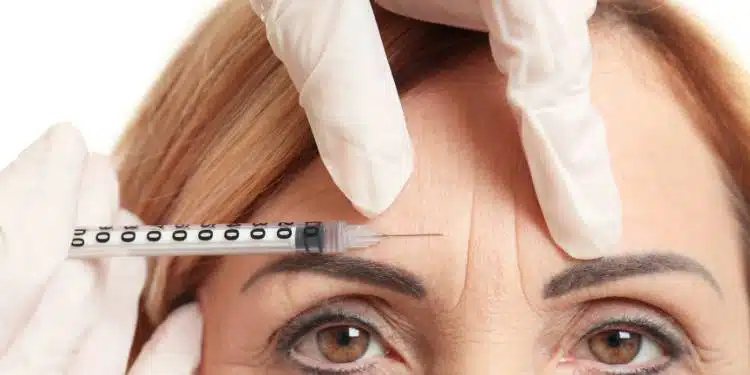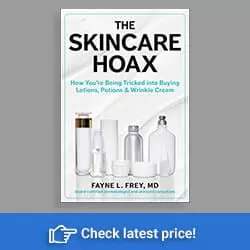You see people promoting botulinum toxin on TikTok. Your friends are all doing it. You want in. You want your wrinkles gone. If you opt for this popular treatment, you will belong to a group of over 7 million people worldwide who received botulinum toxin injections with the intent of minimizing facial wrinkles.
Here’s the good news. When treated by a trained dermatologist, this injection is a relatively safe procedure. The overwhelming majority of people who received one do so with few complaints. Yes, short-term side effects and more serious adverse reactions do occur, but for most, the procedure is well tolerated.
Here are some things to consider as you jump on the botulinum toxin train.
What is Botulinum Toxin?
Let’s start at the beginning. Botulinum toxin is considered one of the most toxic naturally occurring substances on the planet. This toxin is the cause of a rare disease called botulism, with over 100 cases diagnosed a year in the United States. Exposure to the toxin can occur by eating food contaminated with the bacteria Clostridium botulinum, the bacteria that produces the exotoxin. Alternatively, an open wound on your skin can expose you to the bacteria and its toxin. Either way, exposure to this potentially deadly bacteria causes paralysis of muscles, including those in the respiratory tract. Because botulinum toxin blocks the nerve signals from reaching the muscles, generalized weakness and potential paralysis ensue.
Purified forms of botulinum toxin, namely BOTOX® and Dysport®, are approved by the U.S. Food and Drug Administration (FDA) for both cosmetic and medical purposes. Injecting these toxins into the face paralyzes the underlying muscles for several months which temporarily smooth facial wrinkles.
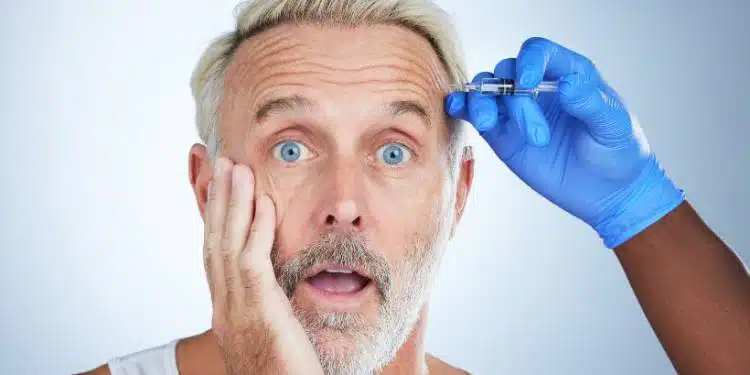
Side Effects
What are some of the side effects from botulinum toxin injections? They range from mild to serious, short-term and longer-term.
Short-Term Side Effects
The mild, short-term side effects of botulinum toxin injections generally develop hours to days after being administered. They usually disappear all on their own with little treatment necessary. The most common of these reactions result from the injections themselves and can occur after any type of injection. These reactions include bruising, redness, swelling, or pain. Local infections can also occur at the injection site if the area was contaminated at the time of treatment.
More Concerning Reactions
More serious systemic reactions to the toxin include the following:
Flu-like symptoms
Temporary weakness of the facial muscles
Eyelid droop (Ptosis)
Development of antibodies to the toxin itself that further treatments less effective.
Additionally, there are even more uncommon but documented serious adverse reactions. These issues are likely due to a high dose of injected toxin and the migration of that toxin to unintended muscle groups. These reactions include but are not limited to:
Breathing problems
Body muscle weakness
Slurred speech or trouble swallowing
If you’re a gambler, and that wrinkle, that trivial skin imperfection on your forehead is bothering you, by all means, roll the dice!
Do Botulinum Injections Hurt?
Good question. Many people want to know if botulinum injections hurt. The answer is yes, needles hurt. Think about it – when it comes to needles, there will always be some sort of sensation. Even a flu shot feels like a pinch. However, the needles used to inject botulinum toxin are extremely small, making the injections very tolerable for most patients.
What Is the Cost of Injections for Wrinkles?
The cost varies depending on how many units are used on a treatment, your location, and the type of medical professional giving the injections. The average individual receives between ten to thirty units per facial treatment, and the average cost per unit is between $15 and $30 dollars. City dwellers tend to pay higher fees. Physician’s offices are usually more costly than spas, but many believe they are safer. So, depending on the location, you can expect to pay between $150 and $1000 per treatment. Keep in mind that health insurance won’t cover injections for aesthetic reasons.
What Are Some Other Considerations?
Other issues are discussed quietly behind the scenes as well, primarily in areas where science has yet to catch up with the demand of this anti-aging trend. Here are some examples.
Does Botulinum Toxin Affect the Ability to Parent?
Does eliminating or minimizing facial expression affect parent child communication? Does Botulinum toxin affect the ability to parent? There are pediatricians and psychologists who expressed concerns that altering facial expressions alters the way mothers relate to their children. What impact does it make on a young child’s development when Johnny doesn’t see the disapproval in mom’s face when he throws a fistful of mashed potatoes at her because her facial expression is blunted or even frozen? The answer? Nobody knows. Studies are ongoing. But if you are a young mother, it might be a good idea to ask yourself whether that little wrinkle is worth the risk.
Will Repetitive Injections into Facial Muscles Affect the Aging Process Later?
When muscles aren’t used, they atrophy. In other words, they waste away becoming weaker and less effective. Ironically, muscles also atrophy with age, even facial muscles. Botulinum toxin works by paralyzing the facial muscles. Any chance repetitive botulinum toxin injections into the facial muscles will exacerbate the aging process down the line? With few long-term studies available, the answer to this question is unknown. Inject today to decrease the appearance of a forehead wrinkle but know you may pay the price in later years. The long-term effects of repeated Botox injections and facial muscle atrophy are uncharted territory.
Can Ongoing Injections Cause Permanent Damage to Facial Muscles?
It’s important to also ask whether repetitive injections of botulinum toxin can cause permanent damage to facial muscles. Again, nobody knows for sure, but there is a bit more science here. The answer is likely, probably. Scientists have studied the ability of muscles to recover from botulinum toxin injections in both animals and humans. One year after discontinuing botulinum toxin injections, all muscles did not recover to their original volume and even showed significant muscle loss.
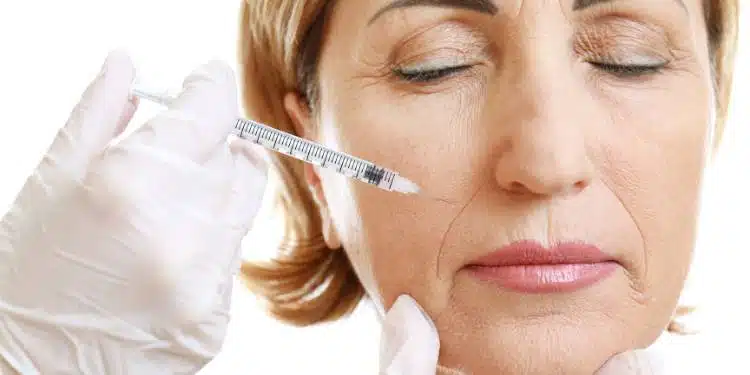
As a Physician, I Took an Oath to “Do No Harm”
There’s that not-so-little matter of “Do No Harm’” we doctors pledge as part of the Hippocratic Oath. Do no physical harm, do no emotional harm, do no financial harm. Six years ago I wrote an OpEd piece about this very topic. My opinion hasn’t changed. It is every person’s right to have a trained professional inject a legal substance into their own body, even a toxin.
Although some really legitimate reasons exist to inject botulinum toxin into our bodies, I do not believe doing so for a self-perceived flaw, namely a wrinkle, is one of them. Nor do I believe the advantages of injecting botulinum toxin outweigh the risks when it comes to doing so simply to eliminate a skin imperfection. A plasticized forehead is not truly a younger-looking forehead. In reality, young foreheads show expression. Perhaps the forehead wrinkle is minimized with repeated botulinum toxin treatments, but what are you doing to the underlying muscles and soft tissues? As of today, we just don’t know.
When my patients ask me for botulinum toxin injections, and it happens often, I ask,
“Why do you want to spend hundreds of dollars to have one of the most poisonous substances known injected into your face? And do you understand that you will need to repeat this procedure several times a year or that the original wrinkle will recur?”
Many say they want anti-wrinkle treatments because their friends are doing it. Others say their wrinkles bother them. When I ask why, they pause. I generally go on to ask,
“Do you think that by paralyzing your forehead muscles, lessening your ability to show expression, and attempting to temporarily minimize a forehead wrinkle will make you happier?”
Most are silenced by this question and have no response.
Will Eliminating Your Wrinkles Lead to Happiness?
I’m not a psychologist. Nor am I a sociologist. But after reading decades of research on why we as a society pursue wrinkle-free faces, I can tell you this. Eliminating wrinkles does not guarantee your happiness. When you look at the research, assuming you are in good health, only one variable continues to correlate with happiness. It is not physical appearance. And it’s not income.
Ask yourself, what were the three happiest days of your life? Take a second to think about it before you answer. The answer for most people usually includes shared times and experiences making memories with family and friends. Now ask yourself what is the one thing in your life you wish you could change? Pause please and then answer the question honestly. If you could snap your fingers and change one thing in your life, what would it be? For most people, assuming they are in good health, the answer is almost always a better connection with a loved one such as a spouse, child, or friend.
The Bottom Line
Aging is inevitable. Embrace it. Do you want to look your best as you get older? Take care of yourself. Improve your mindset. It isn’t the sexiest or easiest answer. There is no quick fix.
In other words, exercise regularly. Eat a healthy diet. Get some good nights of sleep. Make your relationships a priority. Finally, spend your time, energy, and money on things that matter. Now that’s the train I’d like to jump on!
About the Author: Fayne Frey, M.D.

Fayne Frey, M.D., is a board-certified clinical and surgical dermatologist practicing in West Nyack, New York. She specializes in the diagnosis and treatment of skin cancer and is a nationally recognized expert in the effectiveness and formulation of over-the-counter skincare products. As a speaker, Dr. Frey captivates audiences with her wry observations regarding the skincare industry. She consults for numerous media outlets, including NBC, USA Today, and, the Huffington Post, and shares her expertise on both cable and major TV outlets. Dr. Frey is the Founder of FryFace.com, an educational skincare information and product selection service website that simplifies the overwhelming choice of effective, safe, and affordable products available. She is also the author of, “The Skincare Hoax: How You’re Being Tricked into Buying Lotions, Potions and Wrinkle Creams”. In addition, Dr. Frey is a fellow of both the American Academy of Dermatology and the American Society for Dermatologic Surgery.
ORDER “THE SKINCARE HOAX” TODAY!
READ MORE SKINCARE ARTICLES FROM DR.FREY ON 50PLUSTODAY
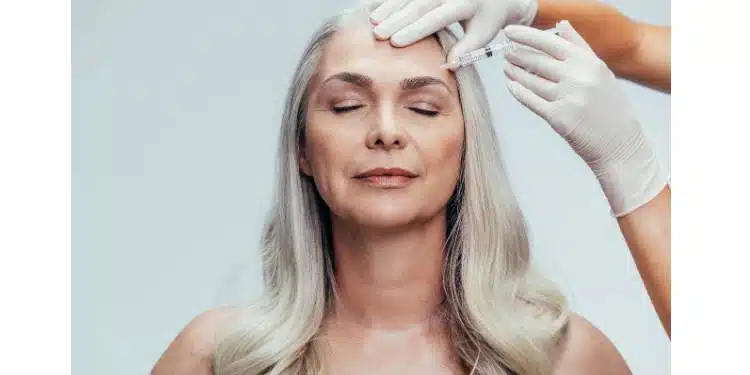
FAQs
Below are some commonly asked questions by our readers about Botulinum Toxin injections.
Is the term BOTOX® synonymous with Botulinum Toxin Injections?
No. The brand name BOTOX® is actually a trademarked name owned by the pharmaceutical company Allergan. Over time, the word “Botox” became incorrectly used for any cosmetic procedure involving Botulinum Toxin injections to reduce wrinkles and fine lines on the face, similar to how people use the brand name “Kleenex” to refer to facial tissues.
How does Botulinum Toxin work for wrinkles?
Botulinum Toxin works by blocking nerve signals to the muscles, causing them to relax. This relaxation can smooth out wrinkles and fine lines caused by repetitive muscle contractions, such as frowning or squinting.
What types of wrinkles can these injections treat?
They are typically used to treat dynamic wrinkles, which are caused by facial expressions and movement. Common areas for use include forehead lines, frown lines (between the eyebrows), and crow’s feet (around the eyes).
How long do Botulinum Toxin injection results last?
The effects typically last three to six months, although individual results may vary. Over time, the treated muscles gradually regain movement, and wrinkles may reappear. Maintenance treatments are usually needed to sustain the desired results.


